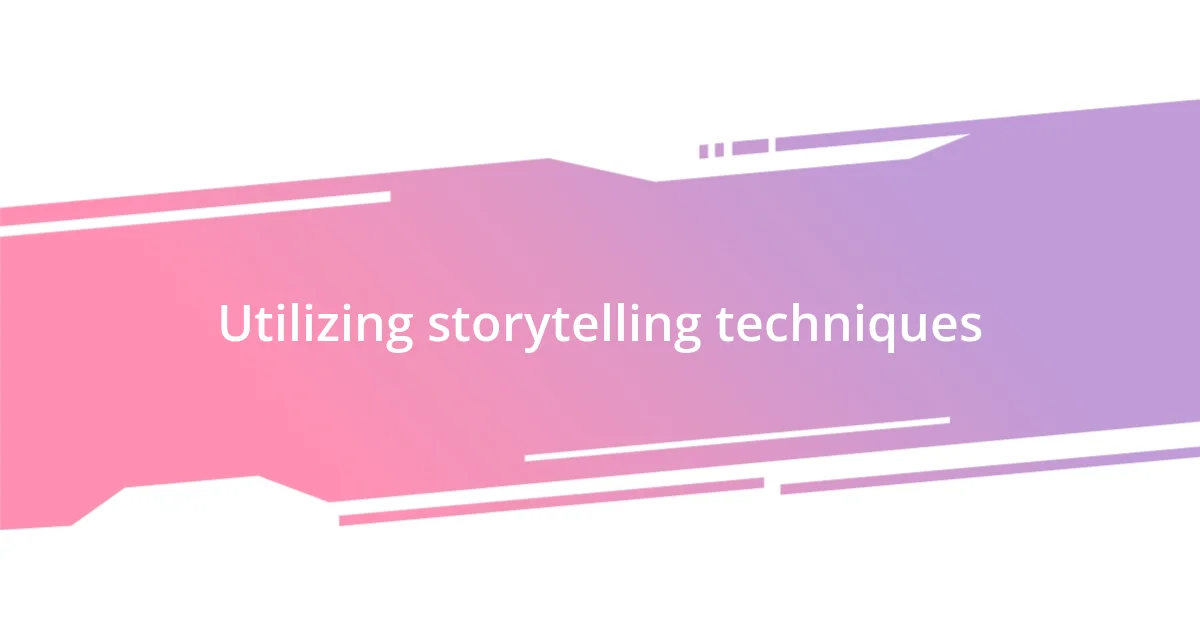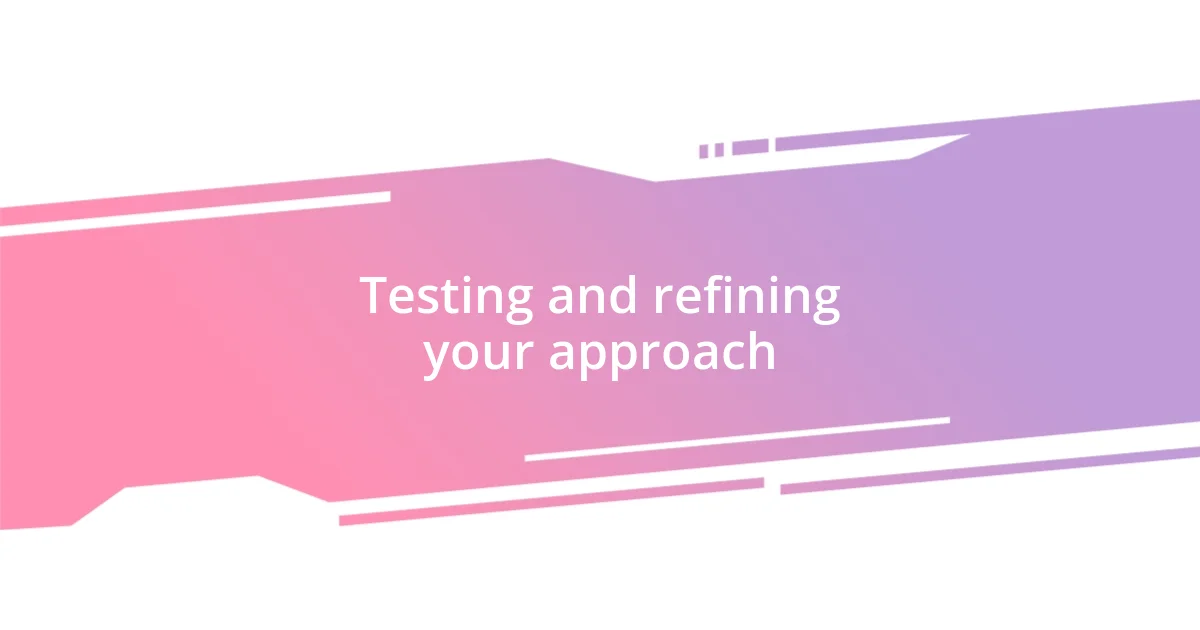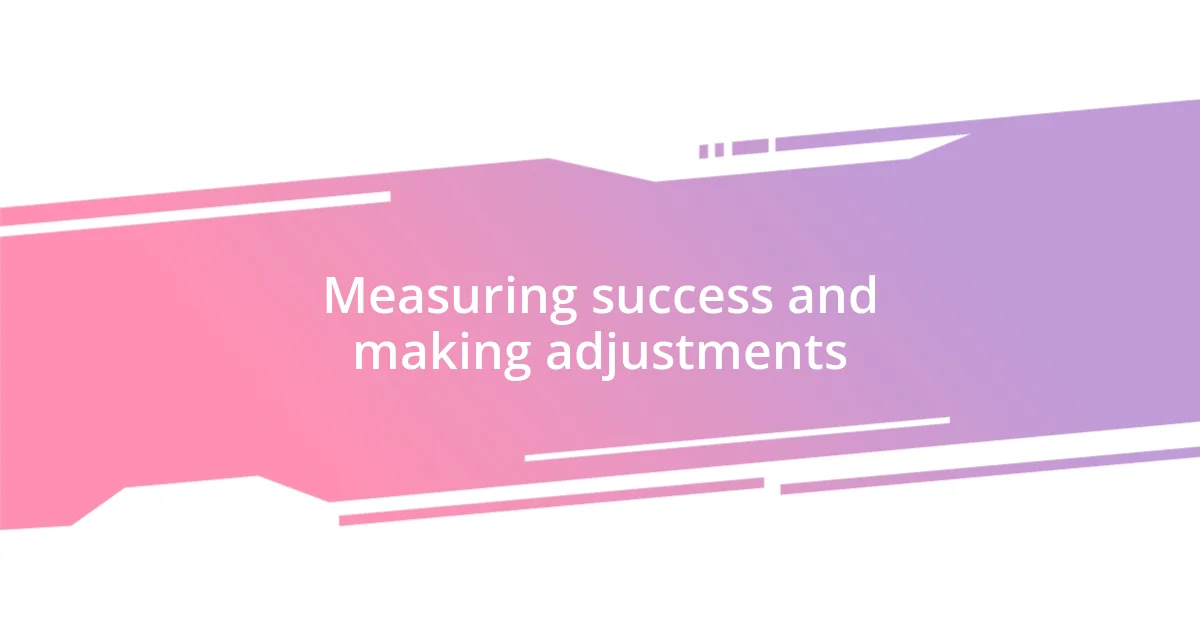Key takeaways:
- Understanding your audience is crucial for crafting compelling and clear copy with an effective call to action.
- Developing a unique voice through authenticity, personal touch, and consistency enhances reader connection and engagement.
- Testing, measuring success through analytics, and being open to feedback allows for continuous improvement in writing effectiveness.

Understanding copywriting fundamentals
Copywriting fundamentals start with understanding your audience. I remember my early days in copywriting when I realized that crafting a compelling message is less about the product and more about the person on the other side of the screen. Have you ever noticed how a well-targeted message resonates deeply? That’s the power of knowing who you’re writing for.
Another crucial element is clarity. In my own journey, I’ve learned that using simple, straightforward language can transform a mundane message into something that truly captures attention. I often think, is it really worth overcomplicating things? Good copy should evoke emotions and inspire action without leaving the reader feeling confused.
Lastly, the call to action (CTA) is where many copywriters falter. I’ve encountered times when I got so caught up in the storytelling that I forgot to guide the reader on what to do next. It’s like setting up a thrilling ride but forgetting to pull the lever. A strong CTA can be the difference between engagement and crickets. So, how do you make sure your reader knows what to do?

Developing a unique voice
Developing a unique voice in copywriting is all about authenticity. I remember a time when I tried to mimic popular writers, hoping to catch their magic. But instead of shining, my words fell flat. Embracing my own quirks and style made my writing resonate more deeply with readers, creating a stronger connection.
It’s fascinating how your unique voice can set you apart in a sea of content. I often find inspiration from the little things in life—like the way I express happiness through simple metaphors or how I tackle challenges with humor. This personal touch not only enriches my writing but also builds trust with my audience. Have you considered how your unique experiences shape the way you communicate?
Creating that distinct voice isn’t just about personal anecdotes; it’s also about consistency. I’ve found that staying true to my style across different platforms strengthens my brand. For example, when I adapted my content for social media, I maintained my conversational tone while tweaking language to fit shorter formats. Authenticity doesn’t mean being rigid; it’s about flexibility while remaining unmistakably you.
| Strategy | Description |
|---|---|
| Authenticity | Embrace your true self to resonate with readers. |
| Personal Touch | Incorporate unique experiences or perspectives. |
| Consistency | Maintain a recognizable style across various platforms. |

Crafting impactful headlines
Crafting a compelling headline is like the first brush of paint on a blank canvas; it sets the stage for everything that follows. I vividly recall a time when a simple tweak turned my headlines from forgettable into magnetic. I had written a piece that went unnoticed until I changed the headline to a question that sparked curiosity. That one shift catapulted engagement. It reminded me that the right words can stir the pot of interest, urging readers to dive deeper into the content.
When it comes to impactful headlines, here’s what I’ve found works best:
- Be Clear and Concise: Aim for clarity over cleverness. A direct approach often wins.
- Use Numbers: Headlines that include numbers tend to attract attention—like “7 Tips for Better Time Management.”
- Invoke Emotion: Tap into feelings. A headline that evokes curiosity or urgency can be a game changer.
- Ask Questions: Framing your headline as a question can engage readers right off the bat. For example, “Want to Boost Your Productivity?”
- Add a Value Proposition: Clearly state what the reader will gain. For instance, “Unlock Your Potential with These Proven Strategies.”
These strategies have not only elevated my own writing but also turned casual browsers into engaged readers. By carefully crafting headlines that resonate, I’ve paved the way for more meaningful connections with my audience.

Utilizing storytelling techniques
Utilizing storytelling techniques in copywriting brings a remarkable depth to my writing. I often recall a time when I shared a personal struggle in a blog post. The moment I opened up about my challenges, I received an influx of heartfelt messages from readers who felt connected. It was a reminder that stories have the power to create empathy, making my content resonate far beyond mere facts.
When I weave narratives into my copy, I try to paint vivid scenes that draw the reader in. For instance, I once wrote about a late-night coffee-fueled brainstorming session that led to an unexpected breakthrough. Describing that frantic energy and excitement allowed readers to visualize my experience, making them feel like they were right there with me. Have you considered how a well-told story could transform your message and engage your audience on a deeper level?
In my experience, elements like conflict and resolution can make a significant impact. I find that sharing both the highs and lows not only makes a story relatable but also inspires others. When I discuss my journey overcoming self-doubt in my writing career, I notice it ignites hope within my audience. It’s a beautiful exchange—by sharing my truth, I invite others to share theirs, creating a community grounded in inspiration and connection.

Engaging the reader effectively
Engaging the reader effectively is at the heart of compelling copy. A while back, I stumbled across a blog post that included a brief anecdote about the author’s childhood pet. By simply sharing that personal story, the author drew me in, and suddenly, I was invested in the narrative. It struck me then how a relatable moment can create an instant connection, reminding me to sprinkle my own experiences throughout my writing.
I’ve also found that asking thought-provoking questions can ignite curiosity and keep readers hooked. For example, when I ask, “What if the key to your success lies in switching one small habit?” it not only gets people thinking but encourages them to dive deeper into the content for answers. This technique has consistently led to higher engagement in my work, as it challenges readers to reflect on their own lives while they’re processing my thoughts.
Moreover, I believe that being conversational is crucial. I often write as if I’m chatting with a friend over coffee, inviting the reader to join me in this dialogue. One memorable moment came when I wrote about my journey of trying to balance work and personal life. Sharing my struggles while asking for readers’ experiences created a space for honest conversation. It’s this kind of authenticity that makes my audience feel included and valued, fostering genuine engagement. Have you considered how your tone may be nudging readers to lean in and listen?

Testing and refining your approach
Testing and refining my copywriting approach has always been a critical part of my development as a writer. I once ran a campaign where I changed the headline based on my gut feeling. After analyzing the results, I was surprised to see that a simpler, more direct headline led to significantly higher engagement. This experience taught me that sometimes, the initial instinct I’ve had needs to be re-evaluated through real-world feedback.
Another turning point came when I decided to experiment with A/B testing on my email newsletters. I split my audience and sent different versions of a message, tweaking the call-to-action in each. The results were eye-opening; one version led to a 30% increase in click-through rates. Have you ever tried making small adjustments to see how your audience responds? It’s a thrilling way to figure out what really resonates.
Over the years, I’ve also learned to listen closely to my audience’s comments and feedback. One insightful reader once shared that my writing felt too formal and dense, which pushed me to adopt a friendlier tone. This shift not only made my content more relatable but also created a sense of community among my readers. Engaging with your audience is a dynamic process, and those little conversations can lead to profound changes in your writing style.

Measuring success and making adjustments
When it comes to measuring success, I’ve found that analytics can be both eye-opening and intimidating. I remember the first time I dived into the metrics of a blog post I’d written; my heart raced as I saw the engagement numbers unfold. What surprised me the most was realizing that the topics I thought would resonate the most didn’t perform nearly as well as some of my more off-the-cuff pieces. This taught me the importance of looking closely at the analytics—not just to celebrate successes but to understand what truly connects with my audience.
As I’ve refined my processes, I started documenting key metrics and trends, which allows me to spot patterns over time. For example, I’ve noted that posts with storytelling elements often lead to longer reading times and more shares. Have you ever looked back at your own content to see if there’s a common thread that flourishes? Making adjustments based on these insights not only boosts engagement but also deepens my understanding of my readers’ preferences and needs.
It’s also essential to remember that success isn’t always about hard numbers. My own experiences have taught me to value qualitative feedback just as much. I once received a heartfelt email from a reader who shared how one of my articles helped them through a tough time. That emotional connection reminded me that sometimes, the impact of my writing can’t be quantified. Have you experienced similar moments that pushed you to re-evaluate your measures of success? Embracing both the numbers and the stories behind them keeps my writing journey rich and fulfilling.












